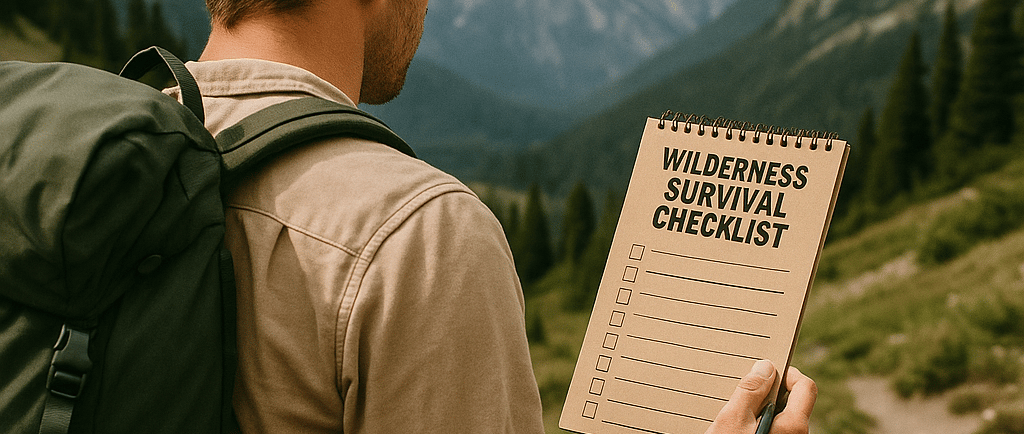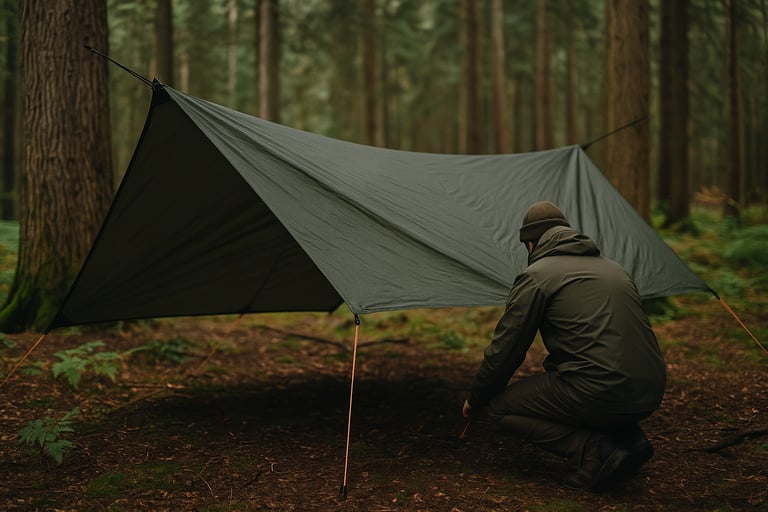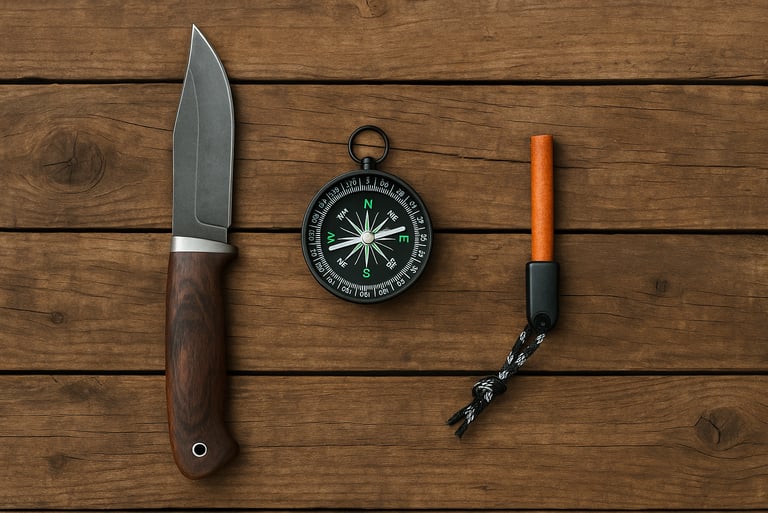Wilderness Survival Checklist: What to Pack Before You Head Into the Wild
Don’t leave home unprepared. This wilderness survival checklist covers the essential gear you need to pack before heading into the wild.


Wilderness Survival Checklist: What to Pack Before You Head Into the Wild
Heading into the wilderness is thrilling — but it’s not something to take lightly. Whether you're hiking for a day or camping off-grid, what you pack can mean the difference between a safe return and a serious emergency. A good wilderness survival checklist is more than just a list of items — it’s your lifeline when things don’t go as planned.
Let’s walk through the essential gear you should pack to take with you before venturing into the wild.
Your Shelter and Warmth Essentials
When you’re in the wilderness, exposure is one of your biggest threats. Staying dry and warm is a top survival priority.
Make sure to pack:
A lightweight tarp, bivy sack, or compact tent;
An emergency blanket or sleeping bag rated for the coldest temps you might encounter;
A foldable foam pad or inflatable ground mat to keep body heat from escaping into the earth.
Even if you don’t plan to camp overnight, weather and emergencies can turn a day hike into a night in the woods. These items could save your life.
Water Filtration and Purification Tools
Clean drinking water is critical — and you can't always trust natural sources to be safe. Even the clearest mountain stream might carry bacteria or parasites.
You should carry:
A lightweight water filter (such as a Sawyer Mini or LifeStraw);
Water purification tablets as backup;
A metal container to boil water if needed.
These options are small, affordable, and crucial for keeping you hydrated without getting sick.
Fire-Starting Equipment
Fire is more than warmth — it’s your heat, your signal, your purifier, your cooking source, and your morale booster. It may even be your repellant to wildlife.
However, never rely on just one method. You should Pack:
A ferro rod or fire steel;
Waterproof matches or a lighter;
A small bag of tinder (like cotton balls in petroleum jelly or dryer lint).
Practice using your gear before heading out. Fire-starting is easy in perfect conditions and when you least need it, but much harder when you're cold, wet, or exhausted, and in more extreme or unfriendly conditions.
First Aid Kit and Medical Supplies
Injuries in the wilderness — even small ones — can escalate fast. A proper first aid kit should include:
Bandages and gauze
Medical tape
Antiseptic wipes
Tweezers
Pain relievers
Blister treatment
Any personal medications
Be sure to check your kit before you set out in the wilderness. And if you've purchased a basic first aid kit, always check and see that it has everything you need. If you have to, add to it. But always be sure you have what you need before setting out.
Make sure you know how to use everything in your kit. It's worth taking a basic wilderness first aid course if you spend a lot of time outdoors.
Pro Tip: I put water purification tablets in my first aid kit. It's an easy place to store it and ensures that where and whenever I venture out, I can always purify water if necessary.
Navigation Tools
Phones are convenient but unreliable when you lose signal or run out of battery. You should always bring:
A paper topographic map of the area;
A compass (and know how to use it);
An optional GPS unit if you're traveling far off-trail.
Learning how to navigate without electronics is one of the most important survival skills you can have.
Food and Emergency Rations
Even if you're only planning a short trip, bring more food than you think you'll need. High-calorie, lightweight options are best:
Trail mix
Energy bars
Jerky
Freeze-dried meals (if you’re equipped to cook)
You might not need all of it — but if you get delayed, you’ll be glad you packed it.
Multi-Tool or Survival Knife
A good knife or multi-tool has endless uses in a survival situation. It can help you:
Prepare food
Make kindling
Cut cordage
Defend yourself in rare situations
Don’t go into the wild without a dependable blade. Choose quality over flashy extras.
Clothing and Weather Protection
Dressing for survival means layering. Avoid cotton and focus on quick-dry, moisture-wicking materials.
Pack:
A thermal base layer
An insulating mid-layer
A waterproof outer layer
A hat and gloves, even in warm weather — conditions can change fast
Wet clothes in cold air can lead to hypothermia quickly, even in spring or fall.
Final Thoughts
This wilderness survival checklist isn’t just for hardcore bushcrafters — it’s for anyone heading into wild terrain where help isn’t immediately available. Pack smart, plan ahead, and always assume that things could go sideways. It’s not about fear — it’s about respect for nature and preparation for the unexpected.
When you’re properly packed, you can hike with more confidence and focus on enjoying the wild, not surviving it.




© 2025. All rights reserved About | Privacy Policy | Terms and Conditions | Affiliate Disclosure | Disclaimer


